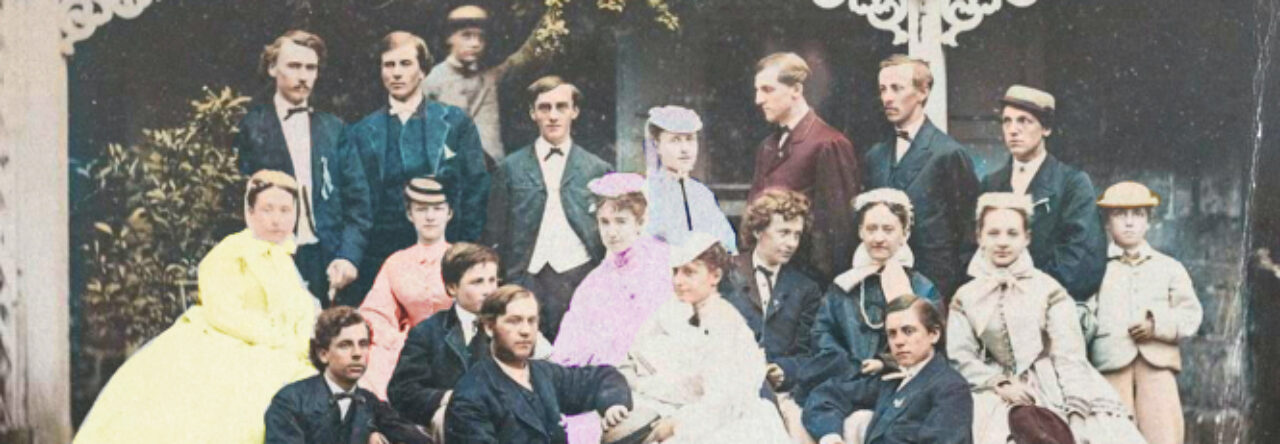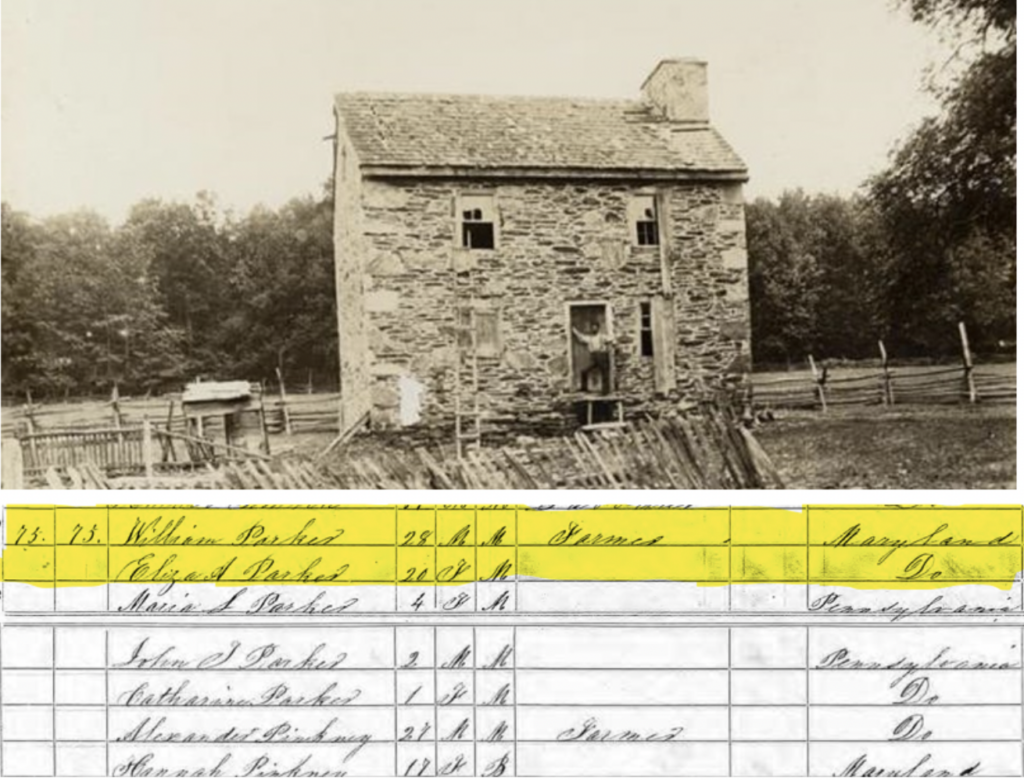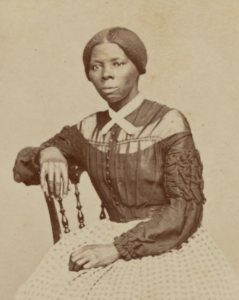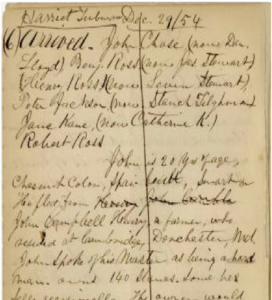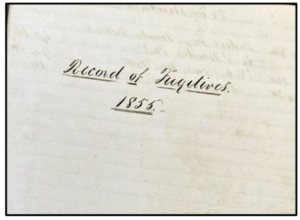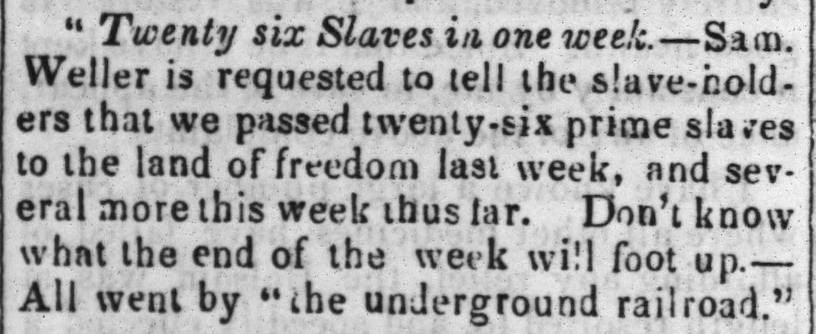How should we teach the story of William and Eliza Parker and other UGRR figures?
Christiana Riot: Case study in History & Memory
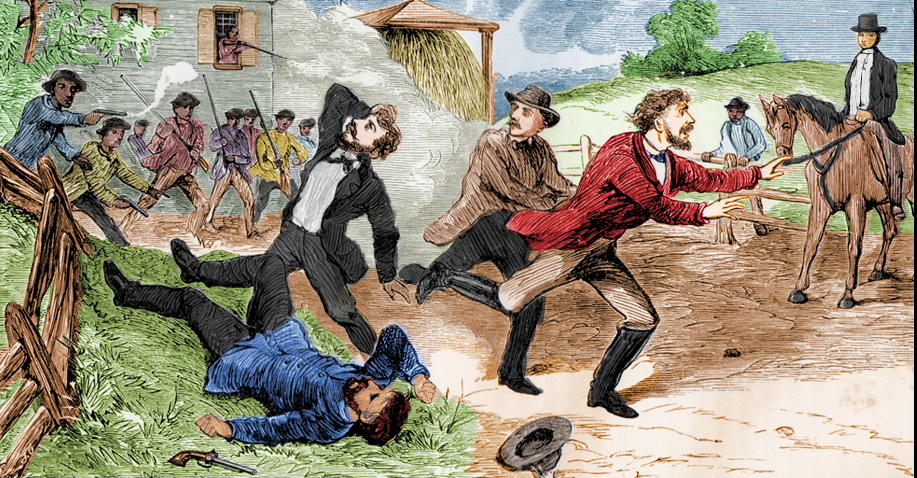
Christiana (1851), orig. by John Osler, colorized by Gabe Pinsker (House Divided Project)
- TERMINOLOGY DEBATE: Riot or resistance?
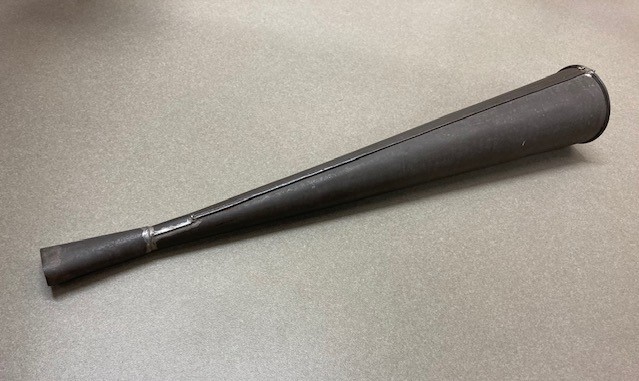
Eliza Parker’s original horn, Christiana, PA (courtesy of Christiana Historical Society; photo by Aiden Pinsker)
Below: interview with Michele Parker Samuels, descendant of William and Eliza Parker, conducted April 2021 by Aiden Pinsker
For more information on William Parker’s mysterious later life, see this research post
1854: Case Study in Turning Points
For full narrative, see this post at the stampedes project blog
Slave Stampedes: Case Study in Mapping
Dec 1845: Harriet Tubman Case Study
Thomas Garrett to James Miller McKim, Dec. 29, 1854
ESTEEMED FRIEND: We made arrangements last night, and sent away Harriet Tubman, with six men and one woman to Allen Agnew’s, to be forwarded across the country to the city. Harriet, and one of the men had worn their shoes off their feet, and I gave them two dollars to help fit them out, and directed a carriage to be hired at my expense, to take them out, but do not yet know the expense. I now have two more from the lowest county in Maryland, on the Peninsula, upwards of one hundred miles. I will try to get one of our trusty colored men to take them to-morrow morning to the Anti-slavery office. You can then pass them on. // THOMAS GARRETT [WILMINGTON, DE]
William Still’s vigilance journal, December 29, 1854
Harriet Tubman Dec. 29/54
(6) Arrived [PHILADELPHIA] John Chase, (now Dan. Lloyd), Benj. Ross (now Jas. Stewart) Henry Ross, (now Lewis Stewart), Peter Jackson, (now Stanch Tilghman) Jane Kane, (now Catherine K.) Robert Ross John is 20 yrs of age, chesnut color, spair built, Smart &c He fled from John Campbell Henry, a farmer, who resided at Cambridge, Dorchester, Md. John spoke of his master as being a hard man_ owns 140 slaves. Some he sells, occasionally_ The owner would not allow John to Seek his own master_ this was the cause of his escape Left behind mother, Bro’s, & sisters, all slaves. Benj. Is 28 yrs of age, chesnut color, medium size, intelligent &c He was owned by Eliza Ann Brodius [BRODESS]_ lived near Bucktown, Cambridge Md. The Mistress was discribed as being “very Devilish.”_ Three slaves finding It difficult to support a family of 8 (whites) they had come to the conclusion to escape to save themselves from being sold. had been threatened.
Sydney Howard Gay’s Record of Fugitives (1855-56)
[NEW YORK CITY, May 1856] Harriett Tubman seven years ago was [the] slave of Edward Brodhurst [BRODESS] of Bucktown, Md. Her master dying, [the] estate to be settled, + two of her sisters having been sold into a ‘chain-gang,’ she determined to run away. She did so, + made her way to Canada…. At Christmas [1854] she returned again for her brothers. Their term of service with [the] lumberman had expired. At Christmas they were to have been sold. On Christmas eve. 1854. she + they left for Canada, where they soon after arrived safely.
UGRR: Case Study in Defining Terms
Statistical Gateway
- Enslaved population in 1840: roughly 2 million
- Enslaved population in 1860: roughly 4 million
- Estimated number of antebellum slave sale transactions: 2 million
- Ratio of antebellum slave marriages broken apart by sale: ¼
- Annual temporary escapes from slavery (“laying out”): 100,000
- Annual attempts at permanent escapes from slavery: 1,000
- Documented recaption (kidnapping) efforts across North during 1850s: 150
- Documented individual fugitive rendition cases between 1850-1861: 200
- Total number of formal federal rendition hearings between 1850-1861: 125
- Number of rendition hearings in New England states after 1854: 0
- Percentage of nation’s rendition hearings held in Ohio 1855-1861: 75
- Vigilance committee records for successful escapes during 1850s: 3,000+
- Documented vigilance-led resistance efforts during 1850s: 80
- Total casualties from antebellum resistance efforts: 100s
- Number of UGRR operatives killed in free states: 0
- Number of freedom seekers killed in free states: 1
- Number of slaveholders or slave catchers killed in free states: 3
- Number of UGRR operatives fined or imprisoned in free states: about 10-12
- People imprisoned for slave-stealing in South, 1840s-50s: 200+
- Longest sentence issued for UGRR conviction under federal law: 3 months
- Longest imprisonment for UGRR operative in a slave state: 17 years
Handout –Defining UGRR
One of the earliest public references to the “underground railroad” from the Albany Tocsin of Liberty in 1842, reprinted widely by other abolitionist newspapers that autumn (Chronicling America)
